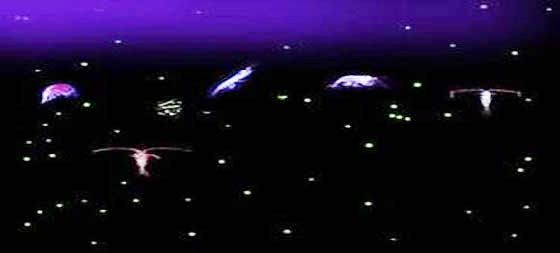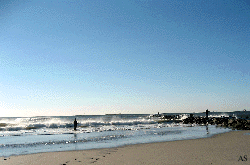
The East Wind
The reason that an east-wind, that is an on-shore wind (blowing towards the land), is good for surf fishing is because of the plankton.

Plankton
Plankton are microscopic organisms of two types; phytoplankton and zooplankton. Phytoplankton are plants, and convert sunlight into food through photosynthesis. Zooplankton are animals, and eat phytoplankton. Many baitfish feed on zooplankton, as do the fry of larger fish. Menhaden (bunker) and Herring are both filter feeders, and their main diet is plankton.
The phytoplankton seek light, and therefore are found mostly in the upper part of the water column, near the surface. The zooplankton follow them to the surface. Winds move the surface water and therefore the plankton. When there is a steady east wind, that is an on-shore wind blowing towards the land, the wind moves the surface water and the plankton toward the beach. The plankton stack up against the beach. The baitfish follow; and right behind them are the stripers.
Pocket
link to larger image
It all starts with the plankton, but it ends up with the baitfish concentrated along the beach with the plankton. If there is a north or south component to the wind, the plankton and bait fish are further concentrated in the "pockets" alongside jettys. The stripers will be looking for the baitfish in these pockets.
The name plankton is derived from the Greek word ("planktos") meaning wanderer or drifter.
The east wind also causes more wave action, which stirs up the bottom, uncovering sand fleas, crabs, clams and other food items that stripers feed on.
South Wind
OK, the East wind is best. Which wind is the worse? It is the south wind. At least in New Jersey a south wind, in conjunction with the rotation of the earth, pushes the surface water out to sea. Cooler water comes up from the bottom to replace it. This is known as upwelling. The cooler water seems to give the fish lockjaw and they stop feeding.
